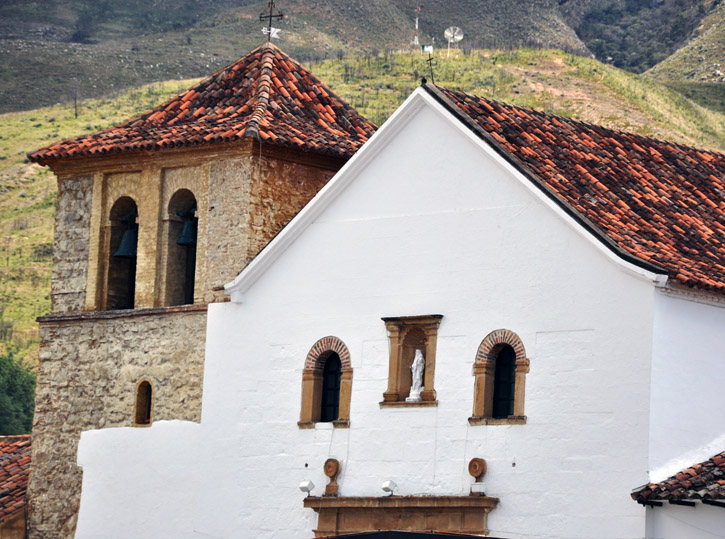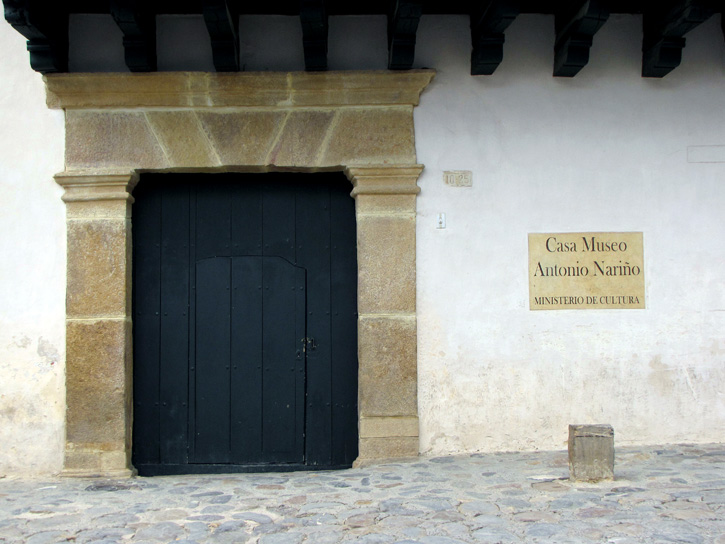This enchanting colonial pueblo is set in an arid valley (Valle de Saquencipá) and has been a major tourist destination for decades. The population triples on weekends, when city folk from Bogotá converge on the town. The surrounding desert scenery, a palette of ever-changing pastels, is gorgeous, the typically sunny weather is never too hot nor too cool, and the town’s architecture of preserved whitewashed houses along stone streets is charming.
In the middle of the square is a Mudejar-style well, the Ara Sagrada, that was the source of water for the townspeople in colonial times.The influx of visitors every weekend doesn’t diminish the appeal of VDL, as it’s known. A surprising number of activities and attractions are in reach, including paleontological and archaeological sites and outdoor activities such as biking and hiking. The nearby Santuario Flora y Fauna Iguaque is one of the most accessible national parks in the country, and you need only a decent pair of boots to hike to its sacred lakes. Villa de Leyva is also a good base from which to explore the Boyacá countryside and towns such as Ráquira.
Church facades in Plaza Mayor, Villa de Leyva, Colombia. Photo © momentcaptured1, licensed Creative Commons Attribution.
Villa de Leyva’s Plaza Mayor is one of the most photographed locations in Colombia. The town’s main square, the largest plaza in the country, is indeed photogenic, but it can be a frustrating task capturing it all in one take: At 14,000 square meters (3.5 acres), it’s big. In the middle of the square is a Mudejar-style well, the Ara Sagrada, that was the source of water for the townspeople in colonial times. On the western side of the square is the Iglesia Parroquial (Cra. 9 No. 12-68, 8am-noon and 2pm-6pm Tues.-Sat., 8am-noon Sun.), made out of stone, adobe, and wood, which was built in the 17th century. It features a large golden retablo altar.
On the western side of the plaza is the quirky Casa Museo Luis Alberto Acuña (Cra. 10 No. 12-83, tel. 8/732-0422, 9am-6pm daily). In addition to cubist-influenced paintings of pre-Hispanic indigenous culture, rooms are filled with the artists’ private art collection and antiques. The courtyard holds some wood sculptures of the artists. The museum also has a pint-sized gift shop. Acuña was instrumental in the restoration of and preservation of colonial architecture in Villa de Leyva.
One of the oldest houses in Villa de Leyva, and best preserved, is the Casa Juan de Castellanos (Cra. 9 No. 13-11) on the northeast corner of the Plaza Mayor. It is so well preserved, in fact, that it today serves as the main office of the city government. The house is not officially open to the public, but you can take a peek. The house belonged to Spaniard Juan de Castellanos, who came to the New World as a soldier. He was an important chronicler of the time.
Across from the Casa Juan de Castellanos is the historic Casa del Primer Congreso de las Provincias Unidas de la Nueva Granada (Cra. 9 No. 13-04). Restored by artist Luis Alberto Acuña in the 1950s, this is where the era of the Patria Boba, as it would later (and derisively) be known, was begun. The Casa Real Fábrica de Licores (Cl. 13 No. 8-03) was the first official distillery in Nueva Granada. After standing in ruins for decades, the house was restored in the 1950s.
The Museo El Carmen de Arte Religioso (Cl. 14 No. 10-04, 10am-1pm and 2pm-5pm Sat., Sun., and holidays, COP$2,500) presents paintings, crucifixes, manuscripts, and religious figures from the colonial era. The museum is on the southwest corner of the grassy Plazoleta de la Carmen. The complex (which dates to around 1850) also includes a monastery and convent.

Enjoy the unique atmosphere in Villa de Leyva by walking its stone streets. Photo © momentcaptured1, licensed Creative Commons Attribution.
The Casa Museo Antonio Nariño (Cra. 9 No. 10-25, 9am-noon and 2pm-5pm Thurs.-Tues., tel. 8/732-0342, free) is a house in which independence figure Antonio Nariño lived and died. It was built in the 17th century, and the museum displays some of his manuscripts as well as items from everyday life in the 19th century, such as a giant mortar used to mill corn. The short and sweet museum often puts on temporary art exhibits, which may have a small admission charge.
Excerpted from the First Edition of Moon Colombia.